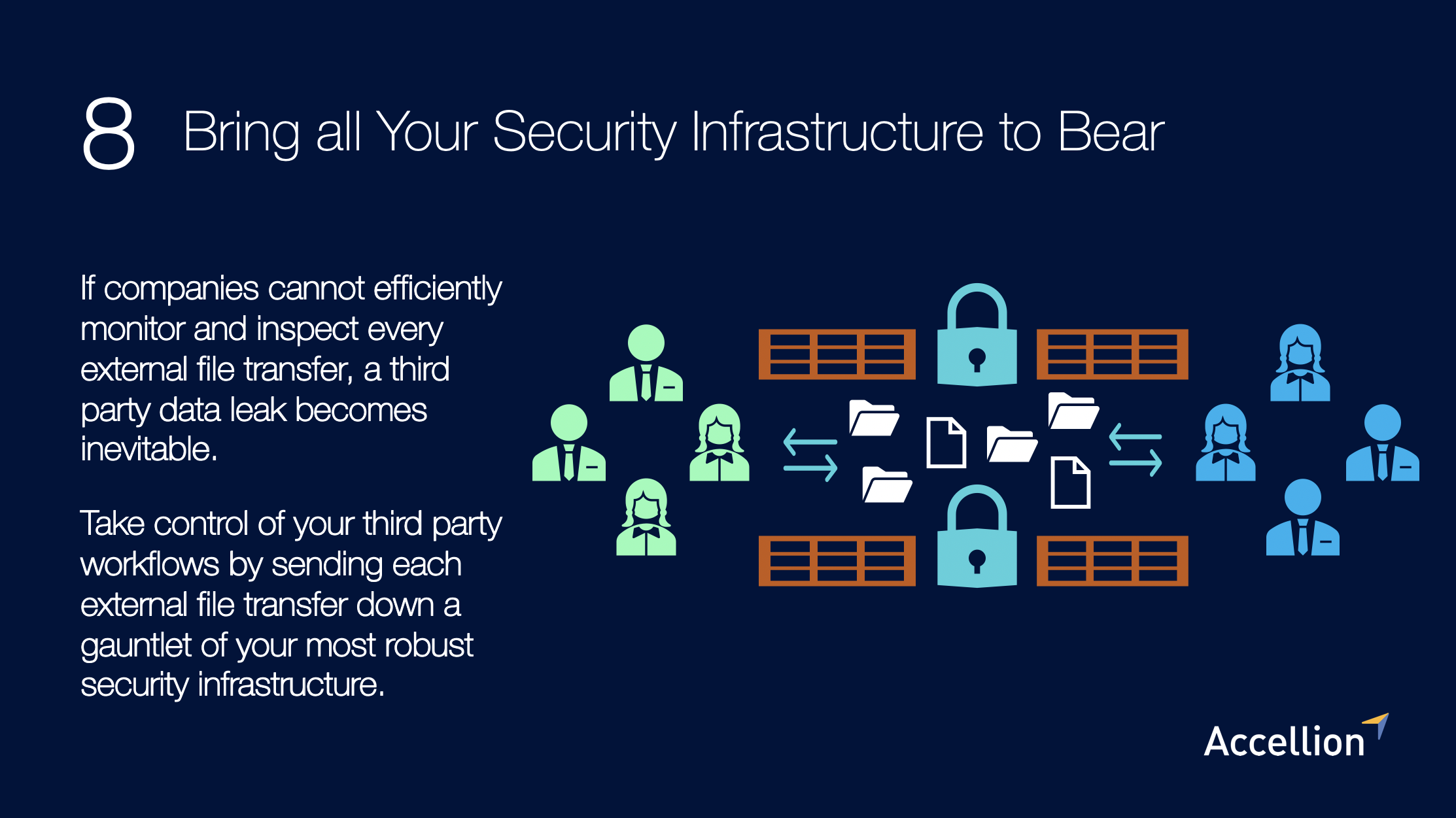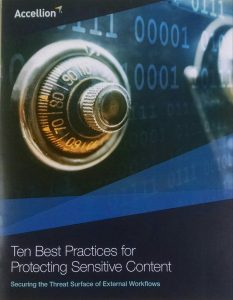Protect Your Third Party Workflows With Security Infrastructure Integrations
CISOs must use every tool at their disposal to protect their PII, PHI, and IP. Most security-first organizations spend millions of dollars on security tools from firewalls and hardened networks to endpoint anti-virus software to multi-factor authentication. Large organizations with mature security architectures have a variety of advanced tools to leverage, including a centralized security operations center (SOC), a consolidated SIEM-based CISO dashboard, data loss prevention (DLP) technology and advanced threat protection (ATP) capabilities. When you have control over the third party workflow threat surface, you gain the ability to send each external file transfer down a gauntlet of your most robust security infrastructure.
Third party workflow threats have a common theme: a user is the actor, and a file is the agent. Complete protection requires a defense that spans the full breadth of the associated threat surface: the collective paths of all files entering and exiting your organization. A comprehensive defense entails securing, monitoring, and managing all third party workflows, including secure email, SFTP, and secure file sharing, among others.
In my previous blog post, I explored how you can use metadata to strengthen the security and governance of your third party workflows. In today’s post, I’ll explain the importance of bringing an organization’s entire security infrastructure to bear to secure your third party workflows.
Bring Your Security Infrastructure to Bear
Walk the floor at RSA or Black Hat and you’ll see hundreds of vendors promoting security solutions. Data breaches still occur however on a daily basis. While many of these solutions keep hackers from getting in, very few prevent employees and their partners from leaking data out. Realistically, companies cannot efficiently monitor and inspect terabytes of data moving across multiple communications channels. Your external workflow mechanisms, whether email, SFTP, MFT, or another, must therefore seamlessly integrate with your broader security infrastructure. Leverage your security integration options to tailor your deployments and meet your organization’s specific security policies and requirements.
For example, use a best-in-class DLP solution to identify PII, PHI, IP, or other sensitive information in outgoing files to protect your data from inadvertent or intentional leaks. Feed inbound files from third parties through your ATP system to check for zero-day and known threats. Store your encryption keys in a tamper-proof HSM appliance.

Lastly, file transfer metadata provides system administrators with critical insight into file activity, including who sent what to whom. This valuable information must also be integrated with your security infrastructure. A CISO dashboard lets you visualize file activity in context, conduct file level drill-down analysis, including DLP and ATP scans, and export all file, user, system, and administrative events to syslog for use in SIEMs.
Secure and Simplify the User Experience
Avoid the temptation to make your third party workflows so secure that employees look for easier, and inevitably less secure, ways to get their jobs done. You must make it easy for employees to adhere to your security policies. Simplify and secure the user experience with LDAP/AD and SSO integrations. Integrate with an SMS service to validate new users when creating accounts. Similarly, authenticate one-time users via an SMS code to avoid account creation overhead and burnout.
When you add this extra layer to your security infrastructure, you reduce the number of unauthorized logins and bolster your defenses against third party workflows.
 To control your third party workflows, send each external file transfer down a gauntlet of your most robust security infrastructure. [source: Accellion enterprise content firewall]
To control your third party workflows, send each external file transfer down a gauntlet of your most robust security infrastructure. [source: Accellion enterprise content firewall]
Now that you have a robust security infrastructure that includes you third party workflows, it’s time to put it to work. Next time, I’ll discuss the importance of developing heuristics to detect anomalous activity in your network.
Don’t want to wait? Download the eBook now!
Ten Best Practices for Protecting Sensitive Content
*** This is a Security Bloggers Network syndicated blog from Cyber Security on Security Boulevard – Accellion authored by Cliff White. Read the original post at: https://www.accellion.com/blog/protect-your-third-party-workflows-with-security-infrastructure-integrations/







